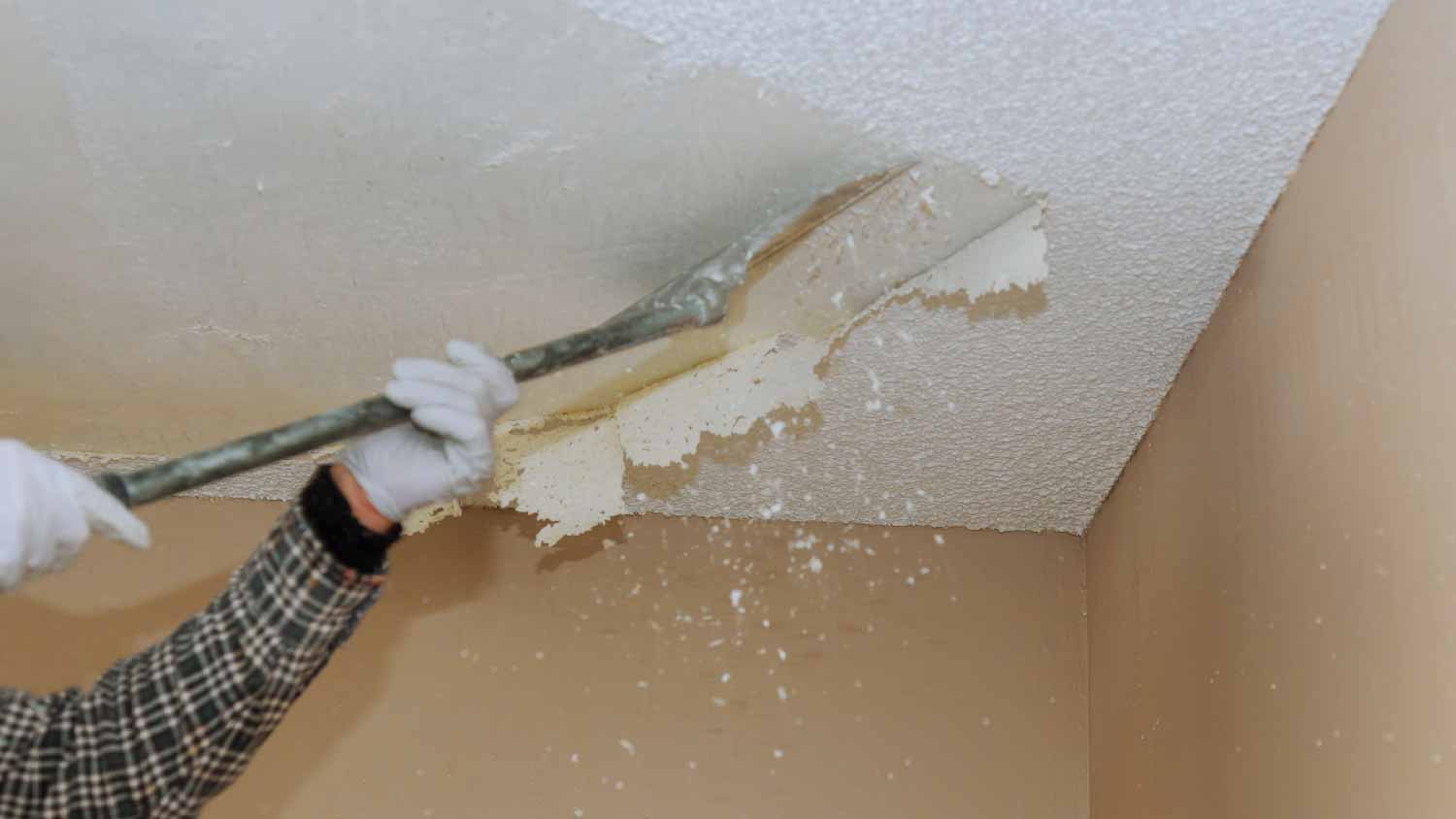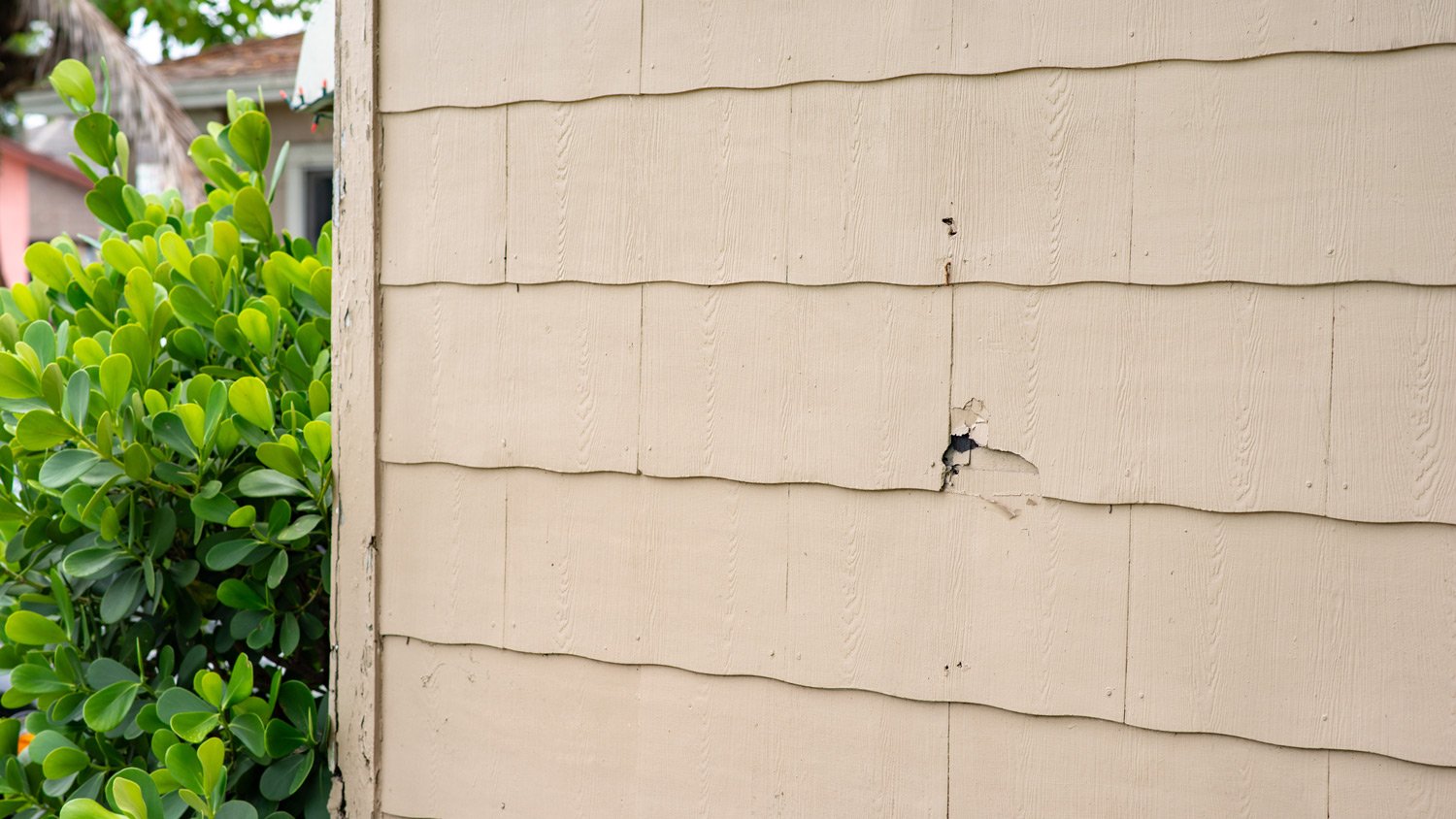
The cost of asbestos testing varies based on location, property size, test type, and other factors. Here’s a breakdown of the costs to conduct an asbestos survey.
Older popcorn ceilings need cautious handling


Asbestos has no odor, but it does have distinct colors and textures.
Homes or popcorn ceilings built before the mid-1980s may have asbestos.
The only way to know for sure that asbestos is present is to test with a kit or hire a pro.
Professional asbestos testing costs $480 on average.
Some people don’t care for the look of a popcorn ceiling textured finish. However, there’s a more important reason to dislike an older popcorn ceiling—it may contain asbestos, which is a known carcinogen. If your home has a popcorn ceiling, you should know how to tell if your popcorn ceiling has asbestos. Learn how to spot the signs of asbestos and know when to call a local asbestos tester so you can keep your household safe.
Asbestos is a microscopic fibrous material that carries a cancer risk if someone inhales the fibers. People with asbestos exposure could suffer from lung cancer or mesothelioma in the future.
From the 1950s through the mid-1980s, home builders commonly used materials that contained asbestos. Popcorn ceilings installed during this time may contain it. However, asbestos fibers don’t become airborne unless someone disturbs the material.
The asbestos fibers are too small to see without strong magnification, so you can’t just spot asbestos with the naked eye. The fibers can float in the air for two or three days after they become airborne, leaving you at risk well after disturbing the material.
Disturbing a popcorn ceiling and causing asbestos fibers to become airborne can occur simply by swatting a fly on it, installing a hanging hook, or bumping into it while cleaning. Removing this material is the safest way to avoid inadvertent exposure to the fibers.
The only way to tell if a popcorn ceiling has asbestos for certain is to test it with a kit. However, before you do a DIY test or hire someone to do a test, look for these clues that a popcorn ceiling may have asbestos.
Not all textured ceilings are popcorn ceilings. The difference between a popcorn ceiling versus a textured ceiling is that a popcorn ceiling has Styrofoam beads or vermiculite inside a spray-on material application. When applied, the beads resemble cottage cheese or small pieces of popcorn. Textured ceilings involve using a drywall joint compound to create a textured finish on a ceiling with no added beads.
Builders generally stopped using materials with asbestos in the mid-1980s. If your home is older than the mid-1980s, it’s possible you have a popcorn ceiling with asbestos. If a previous homeowner replaced the ceiling after the mid-1980s, though, it probably no longer contains asbestos.
Data from Angi customers shows that 78.1% of homes that needed asbestos removal were built before 1978. Only 12.4% of homes needing asbestos removal were built after 1978. If you have an older home, preventative asbestos testing by a professional abatement company is a smart, safe choice.
Ceiling popcorn texture that has a yellow-brown tint and appears to have some gloss may contain asbestos fibers. A powdery white color may indicate material that could have asbestos too. If the ceiling has a non-uniform color, it could indicate the presence of asbestos.
You never want to purposefully disturb a popcorn ceiling that may contain asbestos. However, if you inadvertently disturb the ceiling and you notice a cloud of fine dust, the ceiling may have asbestos. Move away from the dust and the area of disturbance, as inhaling asbestos fibers is extremely dangerous.
Asbestos is odorless—so don't rely on your nose to tip you off about asbestos in your home. Asbestos fibers are too tiny for humans to detect their smell, so even large amounts of asbestos will lack a scent. The only way to know if your home has asbestos is to have a pro test for it.

Because of the possibility of exposing yourself to asbestos by doing the job yourself, you should always hire a pro to remove a popcorn ceiling with asbestos. Even if you did a DIY test kit to tell if your popcorn ceiling has asbestos, you must call a pro to remove it for you.
Who do you hire to remove a popcorn ceiling? You can hire a local popcorn ceiling removal professional for this type of work. Some of these professionals may ask you to hire a local asbestos removal specialist to take out the asbestos material before removing the popcorn ceiling.
These professionals will have the tools, protective gear, and expertise to do the job safely while minimizing the creation of airborne asbestos fibers. The cost to test for asbestos runs about $480 on average, though it ranges between $230 and $780.
If you know that your popcorn ceiling has asbestos, it is dangerous to attempt to remove it yourself. Disturbing the material exposes you to the dangerous fibers as they become airborne. Professionals can protect themselves and other areas of your home from the airborne fibers, which can remain in the air for up to 72 hours after someone disturbs them.
Furthermore, depending on where you live, DIY asbestos removal may be illegal. Some U.S. states require that only licensed asbestos removal professionals do this type of work.
Popcorn ceiling repair or removal costs depend on whether asbestos is actually present.
Asbestos removal costs vary by the amount of asbestos that is present and the material that needs removal. Removing a popcorn ceiling with asbestos costs between $9 and $20 per square foot. For a 10-by-10-foot ceiling, you’d pay $900 to $2,000 for the removal process. If some of the texture or the ceiling itself has damage, you might pay more because of a greater chance of exposure.
If you want to repair a popcorn ceiling, pros will likely recommend tearing out the old material rather than repairing it because of the asbestos. In some cases, it’s possible to cover the old popcorn ceiling that contains asbestos with new drywall rather than repairing or tearing out the old material.
Ken is a great guy and very personable. His work is impeccable and his prices are reasonable. He installed dentil crown moldings in my living & dining rooms. They came our flawless & beautiful. He also installed four rooms of base & base cap molding. There were a lot of challenges in...
From average costs to expert advice, get all the answers you need to get your job done.

The cost of asbestos testing varies based on location, property size, test type, and other factors. Here’s a breakdown of the costs to conduct an asbestos survey.

Get clear answers on asbestos tile removal cost, including average prices, cost factors, and tips to save money on safe, professional removal.

Discover the cost to replace asbestos siding, including key cost factors, and tips to help homeowners budget for safe and effective siding replacement.

Planning to renovate an older home? You may need to test it for asbestos first. If so, a pro will likely ask these asbestos questions before testing your house.

What's lurking behind your home's walls? Learn how to tell the difference between asbestos and cellulose insulation in this guide.

Asbestos insulation can vary in appearance depending on the type.Knowing what asbestos insulation looks like can keep you and your family safe.